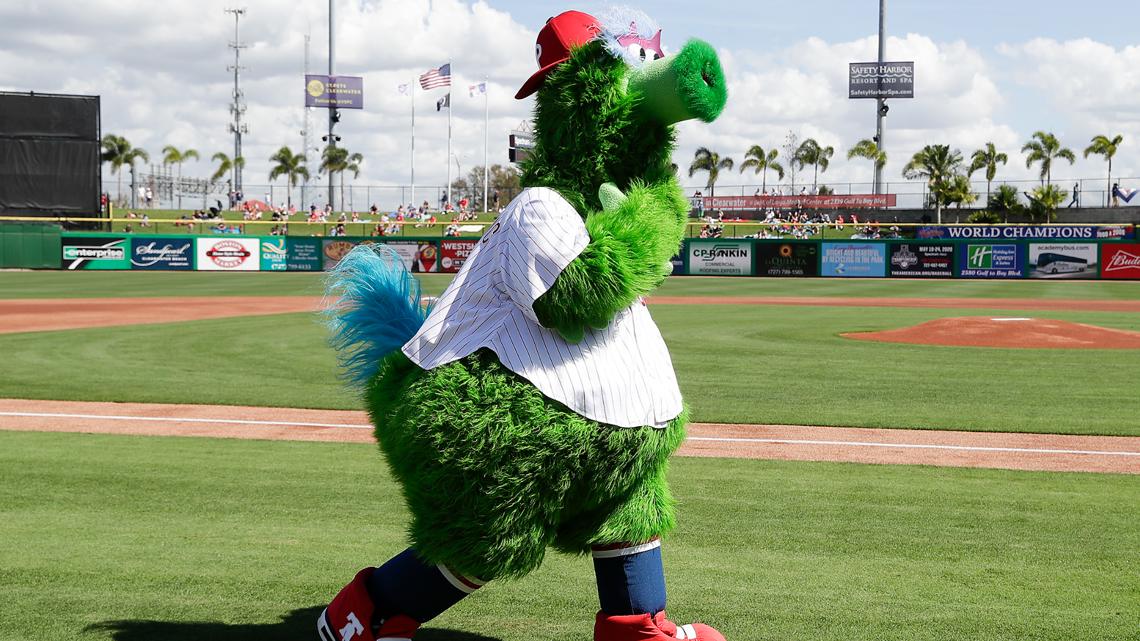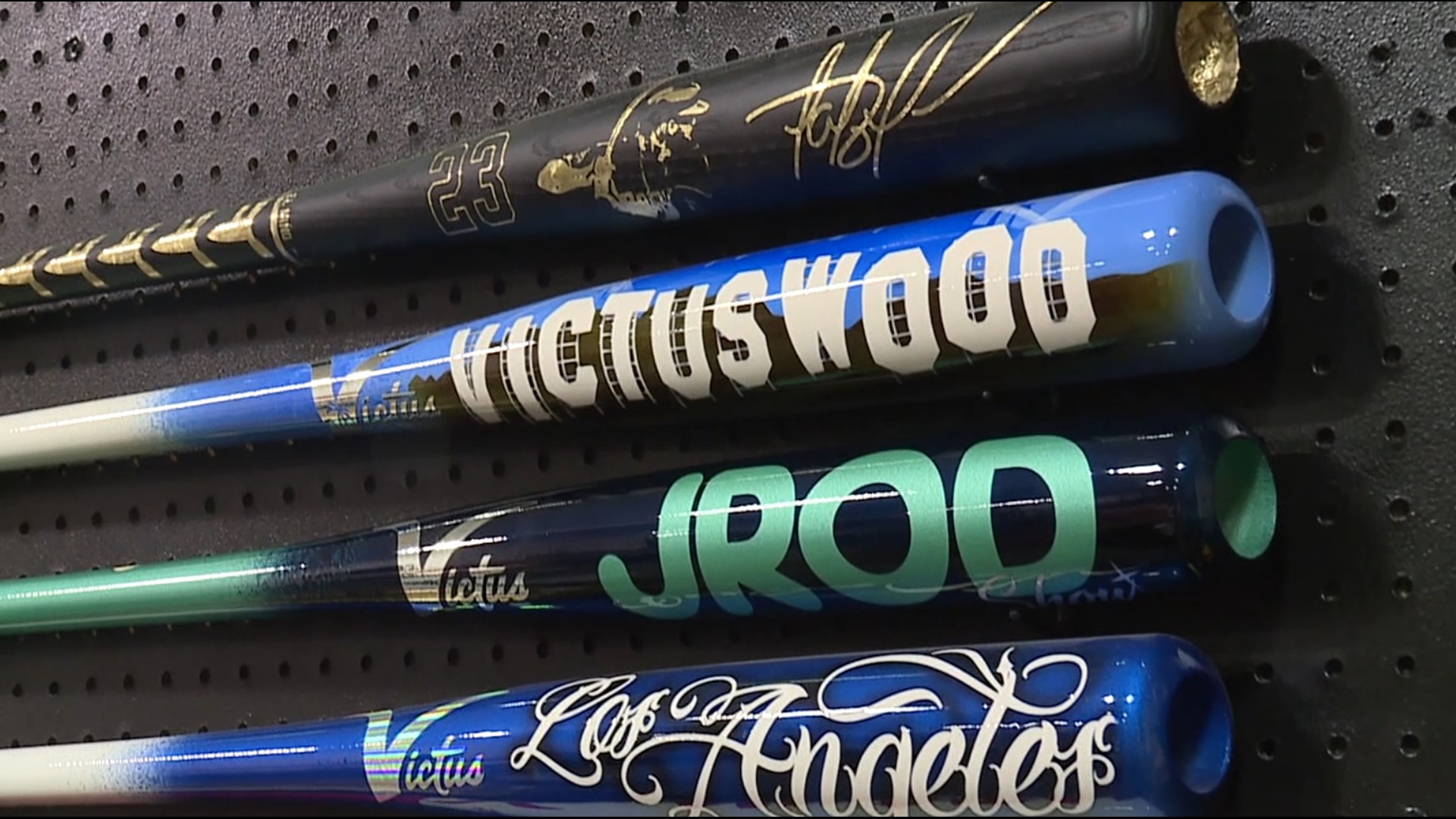PHILADELPHIA — The Phillie Phanatic is no doubt a staple mascot solidified in Philadelphia sports history. He can be found at any Phillies baseball game, hyping up the crowd, hexing the opposing team and dancing with fans.
The furry green mascot made his debut on April 25, 1978, according to Baseball Reference.
Chairman of the Phillies, Bill Giles, was reportedly among the Phanatic's originators.
However, in the beginning, the Phillies didn't own the trademark to the Phanatic. As he gained popularity, the Phillies paid $215,000 to buy the rights to use his image in perpetuity from the original creators, Harris/Erickson Ic.
Bonnie Harrison and Wayde Erickson, who had ties to the Muppets, created the Phanatic's character design and backstory, according to Groovy History. In that backstory, the Phanatic is a flightless bird from the Galapagos Islands.
The Phanatic performs skits before and during the early innings of Phillies games. In later innings, fans can expect to find the Phanatic atop the Phillies dugout hexing opposing players.
He'll also dance with fans or dump giant tubes of popcorn over opposing fans, usually departing after the 8th inning.
As for the man behind the mascot, the Phanatic was originally played by Dave Raymond until his retirement in 1994. Today, the mascot is primarily played by Tom Burgoyne and other Phillies employees, according to Baseball Reference.
In 2018, Harris/Erickson contacted the Phillies, claiming they had the right to terminate the 1984 agreement and regain control of the extremely valuable Phanatic, making him a "free agent," according to Baseball Reference.
In response, the Phillies sued the firm in the United States District Court of the Southern District of New York, stating that the company's claim was legally baseless as it had signed away its rights in full knowledge and had already been paid.
As a result, the Phanatic debuted a slightly changed style, with a lighter green coloring, a lack of fur on his hands and more blue around his eyes. He also lost a bit of weight, maybe due to the stress of the train, and formed a new blue tail.


Despite the legal battle, the Phanatic has continued to bring plenty of laughs over the years.
With no fans in the stands during the COVID-19 pandemic, he interacted with cardboard cutouts depicting absent fans.
Sometimes the Phanatic's antics have proven too much. He was involved in a public fight with Tommy Lasorda, who attacked him on the field as the Phanatic mocked him, according to Dodger Blue.
The Dodgers faced the Phillies at Veterans Stadium on Aug. 28, 1988, when Lasorda, the former Los Angeles manager, grew tired over the Phanatic's bit of dressing a dummy in his jersey.
According to MLB.com, Lasorda later said that he wore only three uniforms in his life: a Boy Scout uniform, a U.S. Army uniform and a Dodgers uniform and that he didn't want anyone degrading them.
During the 1988 game, Lasorda stormed out of the dugout and a tug-of-war over the dressed dummy ensued, where Lasorda ended up with the dummy doll. He then used it to repeatedly hit the Phanatic.
It wasn't the only time the two would feud, but they would make amends in the end.
The Phanatic was introduced to bring more fans into the stands, and that's exactly what he did. He replaced older mascots "Philadelphia Phil" and "Philadelphia Phillis," a pair of siblings dressed to invoke the city's revolutionary spirit from 1776.
In 2005, the Phanatic was inducted as a charter member into the Mascot Hall of Fame, founded by David Raymond. Then, in 2015, Good Morning America bestowed the honor of best mascot in baseball to the Phanatic, according to Fan Nation.
In all, it looks like the Phanatic is here to stay and keep bringing laughs to plenty of Phillies fans (and even opposing teams).

